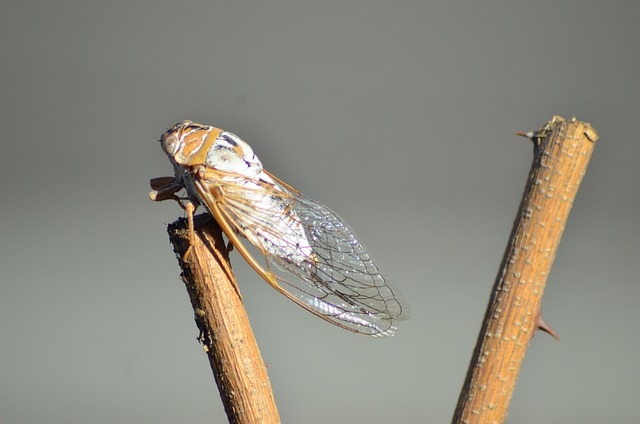Silverfish, nocturnal insects related to cockroaches, prefer dark, moist environments and feed on starchy materials at night. Their life cycle involves four stages, with females laying eggs in hidden areas. Recognizing signs like frass and flattened creatures is crucial for effective silverfish infestation removal. In professional settings, maintaining a clean environment through sealing entry points, regular cleaning, IPM practices, traps, and monitoring minimizes risk of infestations. A multi-step strategy combining inspection, sealing, diverse treatment methods, heat treatments, gel traps, and regular monitoring ensures successful silverfish infestation removal and long-term management.
Professionals in any environment, from offices to hospitals, need to be equipped with knowledge on silverfish behavior and prevention. This article serves as a comprehensive guide for managing and eradicating silverfish infestations. We’ll explore these insects’ intricate life cycle and unique behaviors, helping you identify signs of an infestation early on. Additionally, we provide effective prevention strategies tailored for professional spaces, along with detailed removal techniques for swift and thorough silverfish infestation removal.
Understanding Silverfish: Their Behavior and Life Cycle
Silverfish are small, wingless insects that belong to the family Silverfischidae. Despite their name, they are not fish but are closely related to cockroaches. Understanding silverfish behavior is crucial for effective silverfish infestation removal. These creatures are primarily nocturnal and tend to hide in dark, moist places during the day, such as cracks in walls, behind baseboards, under rugs, or inside cabinets. At night, they emerge to feed on starchy materials like paper products, cardboard, fabrics, and even book bindings.
The silverfish life cycle consists of four stages: egg, nymph, and adult. Females lay eggs in clusters, typically in hidden areas. After hatching, nymphs undergo several molts before reaching the adult stage. Adults are capable of reproducing within a few months, leading to rapid population growth if not controlled. Recognizing these behaviors is essential for effective prevention strategies, enabling professionals to implement tailored solutions for silverfish infestation removal.
Identifying Signs of a Silverfish Infestation
Recognizing the signs of a silverfish infestation is the first step in effective silverfish infestation removal. Keep an eye out for distinctive clues that indicate these tiny insects have made your space their home. Silverfish often leave behind visible evidence, such as small piles of shiny, granular waste – called frass – in hidden areas like cracks and crevices. These insects are also known to feast on a variety of materials, including paper products, fabrics, and even glue, which can result in noticeable damage or discolouration.
Moreover, their presence may be signaled by the sight of these flattened, wingless creatures scurrying about, especially at night since they are nocturnal. While silverfish infestations might go unnoticed for some time, being proactive in identifying these signs can help prevent a major problem from escalating. Prompt action is key to effective silverfish infestation removal and minimizing damage caused by these persistent pests.
Effective Prevention Strategies for Professional Environments
In professional settings, effective silverfish infestation removal and prevention strategies are paramount to maintaining a clean and healthy work environment. One key approach involves identifying and addressing potential entry points. Silverfish are adept at squeezing into tiny cracks and gaps, so sealing these areas with caulk or similar materials can significantly deter their access. Regular cleaning routines, particularly focusing on eliminating organic debris and food sources, create an unappealing habitat for silverfish. Implementing integrated pest management (IPM) practices further enhances prevention efforts. This involves a combination of non-chemical methods, such as proper waste disposal and sanitation, alongside targeted pesticides if necessary.
Additionally, staying vigilant through regular inspections can help detect any early signs of a silverfish infestation. Traps and monitoring devices can provide valuable insights into the presence and movement of these insects. By integrating these preventive measures into existing facility management protocols, businesses can effectively mitigate the risk of silverfish infestations, ensuring a more productive and comfortable workspace for employees.
Comprehensive Removal Techniques for Professional Intervention
Professionals dealing with silverfish infestations require a multi-pronged approach for effective silverfish infestation removal. This involves a combination of thorough inspection, identifying and sealing entry points, and implementing tailored treatment strategies. By combining physical methods like vacuuming and dusting with chemical interventions such as insecticides and baits, professionals can disrupt silverfish populations at every stage of their life cycle.
Comprehensive removal techniques further encompass the use of specialized tools like heat treatments or gel traps to eliminate hidden colonies and prevent re-infestation. Regular monitoring and maintenance are crucial components of long-term management, ensuring that any new infestations are detected early for swift silverfish infestation removal.
Professional education on silverfish behavior is paramount in effective prevention and removal of infestations. By understanding these creatures’ unique life cycle and identifying subtle signs, we can proactively implement strategies to safeguard our environments. Armed with comprehensive removal techniques, professionals can swiftly address any existing issues, ensuring a clean, silverfish-free space. Remember, proactive measures and expert interventions are key to preventing and managing silverfish infestations.
